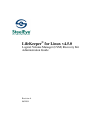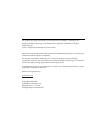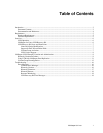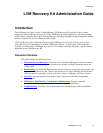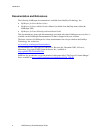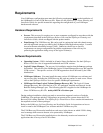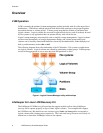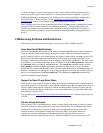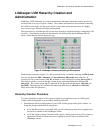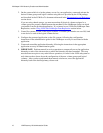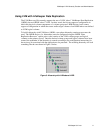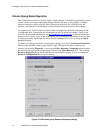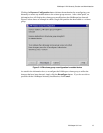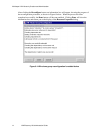
Overview
As shown in Figure 1, each volume group has one or more logical volumes that depend on it.
Conversely, each logical volume must have a volume group on which it depends. A typical
LifeKeeper hierarchy containing these two LVM resources looks much like the relationships
shown in Figure 1. Refer to Figure 2 in the
LifeKeeper LVM Hierarchy Creation and
Administration section for an example of an actual LifeKeeper hierarchy.
The LVM Recovery Kit uses the commands provided by the lvm package to manage the volume
group and logical volume resources in a LifeKeeper hierarchy. Volume groups and logical
volumes are configured (or activated) when a hierarchy is being brought in-service during a
failover or switchover operation, and are unconfigured when a hierarchy is being taken out-of-
service.
LVM Recovery Kit Notes and Restrictions
The following notes and restrictions apply to this version of the LVM Recovery Kit.
Linux Boot Script Modifications
The Linux distributions that include LVM have also included modifications to their system boot
scripts to activate LVM volume groups and logical volumes. Because LifeKeeper expects to
always control the state of any volume groups and logical volumes that it is managing, the LVM
Recovery Kit installation performs modifications to the system boot script to prevent it from
activating volume groups and logical volumes that are controlled by LifeKeeper. The boot script
is modified to call a command provided by the LVM Recovery Kit, /sbin/vgactivate, rather than
the vgchange utility provided by the lvm package. The vgactivate command simply calls the
lvm vgchange command with the appropriate arguments to individually activate all volume
groups that are not under LifeKeeper control. In some recent distributions, the lvm package now
includes a mechanism for limiting the set of volume groups to be activated at boot time, using an
entry in the configuration file /etc/sysconfig/lvm. The LifeKeeper vgactivate command also
checks for and honors these settings.
Support for Raw I/O and Entire Disks
While Figure 1 shows logical volumes residing below various file systems and volume groups on
top of disk partitions, it is important to note that the LVM Recovery Kit can support raw access to
logical volumes when used in conjunction with the LifeKeeper Raw I/O Recovery Kit, and can
manage volume groups that are composed of one or more entire disks (e.g. /dev/sdc) rather than
disk partitions (e.g. /dev/sdc1).
Also see the section
Using LVM with LifeKeeper Data Replication for a further option in the use
of LVM.
Volume Group Activation
In the current LVM 1.x implementations, when a volume group is activated, all logical volumes
associated with that volume group are also activated automatically. For LifeKeeper, this means
that there will be times when a logical volume is active despite the fact that its associated
resource instance is still marked as being Out-of-Service (OSU). In a typical failover or
switchover operation, LifeKeeper will attempt to bring the logical volumes in service
immediately after the volume groups anyway, and the resulting calls to the restore script will
LifeKeeper for Linux 7



